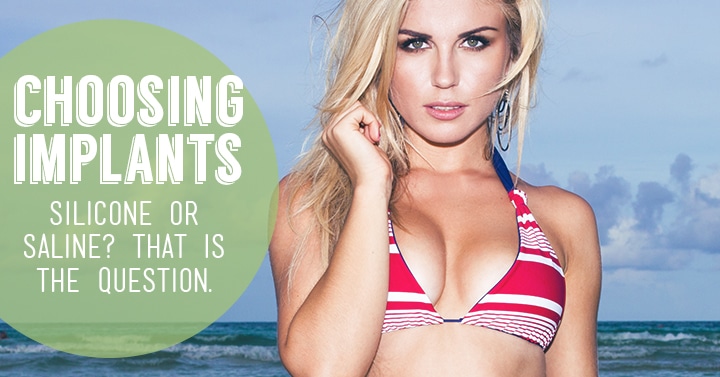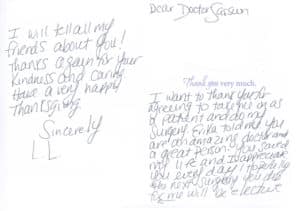Saline or Silicone Breast Implants?
- Posted on: Aug 6 2014
Which is right for you?
By H. Sasson, MD, FACS
When I talk to patients about this basic breast augmentation decision, my first priority is to focus on their desires. How do they picture their ideal breasts? What is the fantasy?
That comes first, because that is what I’m giving them – a new sense of self based on their idea of how they want to look, feel and present themselves to the world. As for the practical differences between saline and silicone implants, that comes second. Both types are safe. Both are FDA-approved. At the end of the day, the practical differences are quite minor.
Texture, Texture, Texture
This is the big question. How will the breasts feel? And of course, which offers the most natural look?
Silicone implants have a reputation for having the best texture. The gel in silicone implants mimics human breast tissue extremely well, while saline implants NY can leave the breast feeling harder than real breasts.
Silicone blends in with natural breast tissue so seamlessly that it doesn’t ripple. What I mean by that is that it doesn’t create a surface irregularity where the implant meets real breast tissue.
Saline implants have a reputation for rippling. As they succumb to the pressure of surrounding breast tissue, a “seam” of rippling skin can appear on the surface. This is especially true when they’re placed above the pectoral muscle.
I always let my patients feel both types of implant under a range of simulated circumstances. That way they can decide for themselves which feels more natural.
Why Saline?
At this point you’re probably wondering: If silicone implants NY are so superior in texture, why isn’t everyone getting silicone and ignoring saline?
Good question. This goes back to one cunning feature of saline implants: their adjustability. Saline implants NY are placed in the breast empty, then filled after they’re in place. This offers surgeons a terrific opportunity to get my patients’ breast size exactly right during surgery. I can fill the saline implants within a specified range. My patient and I have the whole gamut of sizes to choose from. Silicone implants, on the other hand, come in 25-30 mL increments, so they offer fewer options.
Bonus: With saline, women with breast asymmetry can finally get their breasts evened out!
Smaller incision: Because saline implants are collapsed when they go in, they require a smaller incision than silicone implants. But this is rarely a factor in my patients’ decision making. I place incisions where they can barely be noticed. And they fade after a year or two anyway. So this is kind of a non-issue.
The risk of rupture is about equal with saline and silicone.
If a saline implant ruptures, it will deflate (harmlessly). You‘ll know about it right away. With silicone, your breast won’t change shape so tests such as an ultrasound or MRI may be needed to diagnose the rupture. To guard against unnoticed ruptures, the FDA recommends MRI screenings three years after surgery and every two years after that.
Neither implant is designed to last a lifetime. The longer a woman has either, the likelier she’ll be getting a replacement at some point.
A consultation can answer further questions
Dr. Sasson is a board certified plastic surgeon trained at UCLA and Yale University Hospitals and is the chief of plastic surgery at two Long Island hospitals. He has many years of experience in cosmetic surgery and will be happy to formulate the proper plan for you. Please call our Great Neck (516) 487-5017 to schedule your consultation.
Tagged with: Breast Implants, Saline, Silicone
Posted in: Breast Surgeon





